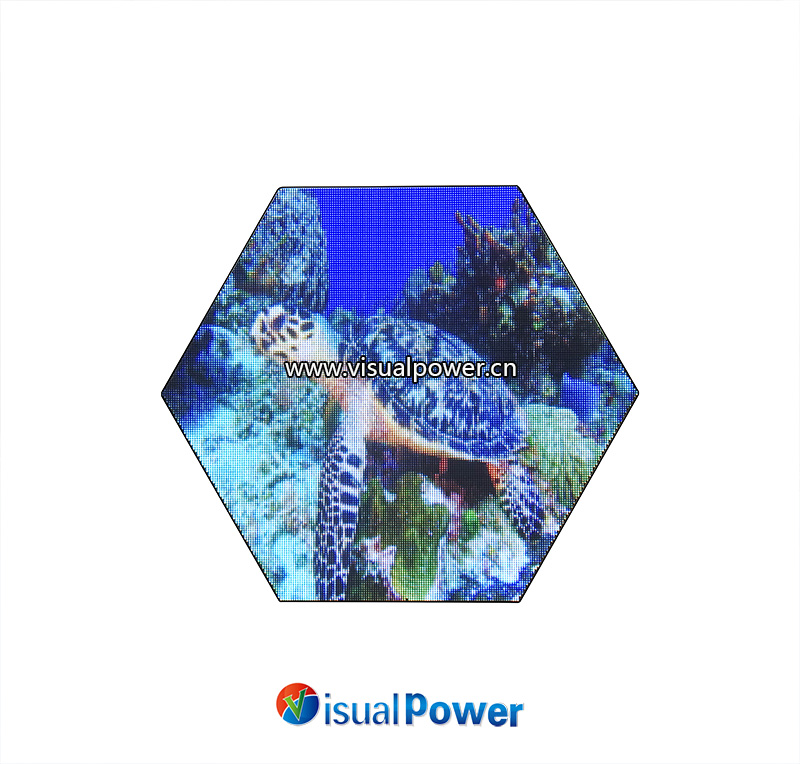Categories
- News (40)
- case study (6)
I never thought that one day I would completely change my perception of display technology because of a “shape.”
I’m a visual freak. Yeah, the kind of guy who can’t resist symmetrical shapes. The first thing that caught my attention was an exhibition where I walked in and was shocked – not to say “shocked”, but literally stood there for 30 seconds – by a huge wall made up of countless hexagon LED displays. It is not a traditional boxy, nor is it a strange alien decoration, but a high-level sense between technology and art. Hexagonal, precise symmetry, infinite splicing geometric magic, like a beehive, but also like the future world of data light wall.

From that day on, I began to study it, and even went to participate in various LED forums, asking manufacturers, asking technicians, to touch and see to disassemble every detail. Here are some of the things I’ve come up with along the way – hopefully to help you, even if you’re just a little curious about this “weird hexagonal screen.”
Why a hexagon? What’s so special about it?
First, a triad: Hexagons are one of the most stable geometric structures. Nature’s beehives, turtle shells, snowflakes, and even the graphite structure of carbon molecules are hexagonal. It is not only beautiful, but also has the characteristics of seamless splicing and optimal utilization per unit area.
The hexagonal LED display brings this geometric advantage to the extreme:
Modular splicing: Most of the traditional LED screens are rectangular splicing, and the shape is limited. Hexagonal modules can easily create more free patterns such as triangles, honeycombs, and spirals.
Strong visual impact: the unit itself is a highlight and does not need extra decoration. Many people stand in front of it will not consciously reach for their phones to take pictures.
A stronger sense of interaction: especially in shopping malls, exhibitions, and art installations, hexagons can naturally guide crowds to approach, participate, take photos and punch the clock.
I have personally seen a brand use it in the store as a “encircled logo wall”, not only significantly increased customer traffic, but also led to the brand’s exposure on social media. This kind of design really doesn’t just “look cool”, it helps you tell a visual story in a subtle way.
Is it difficult to install? Is the budget big? Let’s be honest
That’s the first question a lot of people ask me. I thought at first, “This thing must be so expensive.” But as I dig deeper, my view changes.
The modular design is actually very conducive to mass production and maintenance. When you buy a hexagonal screen, you don’t buy the whole thing, you buy it like Lego: pieced together one by one. This not only greatly reduces the complexity of transportation and installation, but also leaves enough room for future replacement and upgrade.
In terms of budget, it is indeed slightly more expensive than the standard screen, but it is not too expensive, but reasonably reflected in its “design sense” and “flexibility”. If you want to create a brand door, exhibition drainage device, art space decoration, then this investment is a sure win.
Which scenarios are suitable for hexagon leds?
I have summarized a few of the most “interesting” application scenarios:
Brand flagship store: Create visual symbols, instantly let people remember who you are.
Science and technology exhibition/Museum: Information display is no longer cold words and pictures, but a dynamic visual immersion experience.
Music festival/stage: Interactive with lights, with sound effects to create a strong sense of rhythm.
Luxury lobby/club/art space: Make a digital art wall to enhance the space style in a second.
Social punch device: Designed into honeycomb, tree, matrix… No matter how you spell it, it’s a natural fit for “coming out.”
To put it bluntly, if you need more than just a display, but a “memory point”, a sense of engagement, then it is much stronger than the traditional rectangular screen.
One of my favorite experiences
At a creative installation show, my friend and I built an “emoticon wall” out of hexagonal screens – each module was an LED hexagon unit that, when connected, could display selfies, memes and even GIFs uploaded by viewers in real time. In the middle of the wall is the outline of a smiley face, the more people upload, the clearer the smiley face.
On the second day of the show, the wall became the focal point of the venue.
I stood in the crowd and watched others take photos, like, and interact in line. In that moment, I understood: technology is not something cold, it’s just a cooler expression. The hexagonal LED display is a tool to make the expression more vivid.
End: If you want to do something different, hexagonal LED is a good place to start
I always feel that the truly attractive vision is not showy technology, but the details that move people. Hexagonal LED is just such an underrated treasure design. It is not as grandiose as laser and AR, it is standing steadily there, but it can let people approach it, remember it, and share it.
If you are preparing to work on a project and are looking for a display solution that is both beautiful and practical, unique and not popular, you may wish to take a look at this “hexagonal” world. It… it really blows your mind.